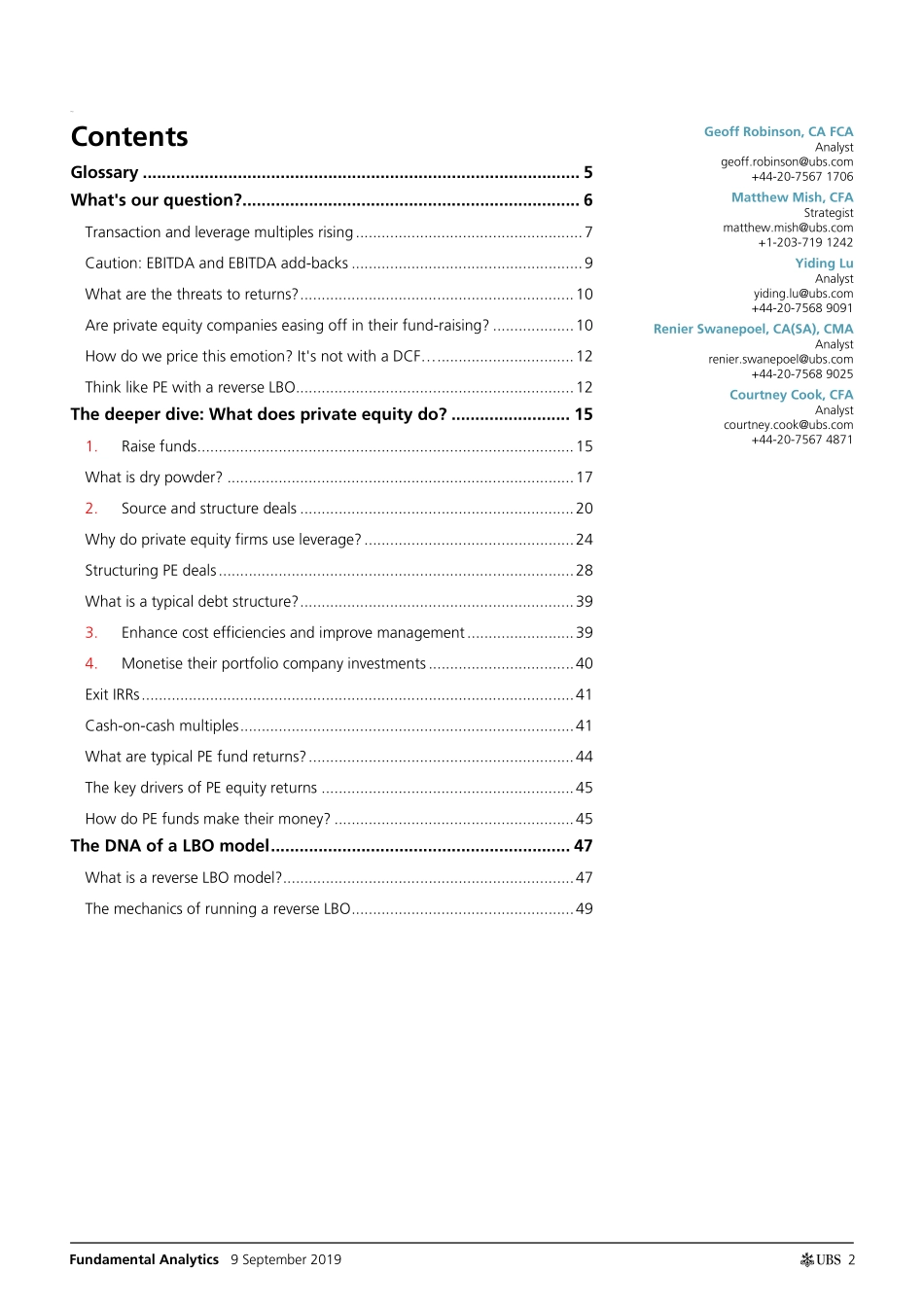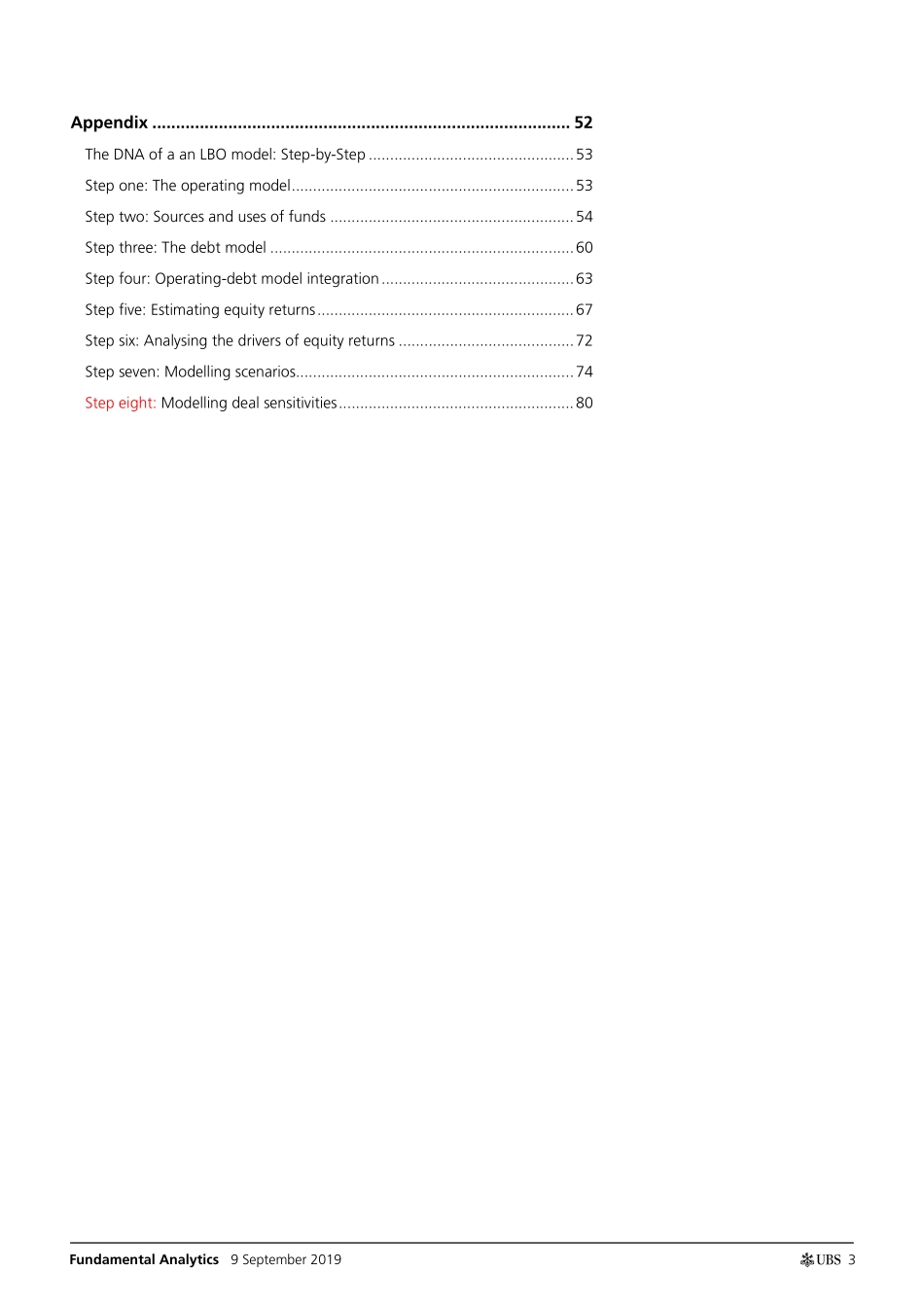www.ubs.com/investmentresearch This report has been prepared by UBS AG London Branch. ANALYST CERTIFICATION AND REQUIRED DISCLOSURES BEGIN ON PAGE 87. UBS does and seeks to do business with companies covered in its research reports. As a result, investors should be aware that the firm may have a conflict of interest that could affect the objectivity of this report. Investors should consider this report as only a single factor in making their investment decision. Global Research 9 September 2019 Fundamental Analytics $2.5 trillion of private capital dry powder: How to answer the question "At what price can PE bid?" Private equity is awash with $2.5 trillion of unallocated capital According to Preqin data, global private equity is currently sitting on c.$2.5 trillion of uncommitted capital, or "dry powder", across all fund types. Given current levels of deal intensity, this represents around three years of ammunition for investment, which is still manageable given private equity firms' typical three- to five-year investment horizon. Of course, this would be threatened if deal intensity were to fall in the event of an economic downturn and a low-growth environment. Why is there so much dry powder? Since 2008, the private equity asset class has generated enhanced returns in a low- return environment, outperforming listed equities. This provides an attractive haven for investors. That said, the volume of dry powder may not be as worrisome as the headline number suggests. Around two-thirds of it is young capital, raised with recent vintages in the last two to three years, suggesting that the recent deal cycle has cleared out older capital. Too much cash chasing too few deals, pushing up asset valuations Naturally, this dry powder is chasing deals and needs a home so that it can generate returns for investors. Competition is tough, however, and high-quality targets are limited. Private equity firms are now accepting lower IRR returns, with median IRRs in the mid-teens on a three- to five-year exit. These factors increase the upward pressure on transaction multiples. LBO transaction multiples are now averaging 11x EV/EBITDA, higher than the 9.9x average prior to the global finance crisis (source: Preqin). What can PE pay for investments? Using a reverse LBO lens to price deals Fundamental value is not, typically, private equity firms' foremost consideration (though it is a consideration). Rather, they price deals to maximise exit IRRs (for their investors) balanced against a risk-appropriate transaction finance structure and a cash-generating operating model. Private equity can have the motivation and ability to attach higher deal offer premiums than strategic buyers. Running a good LBO model in reverse, using current market parameters, allows investors to back out the offer premiums that private equity firms could target at covered...


